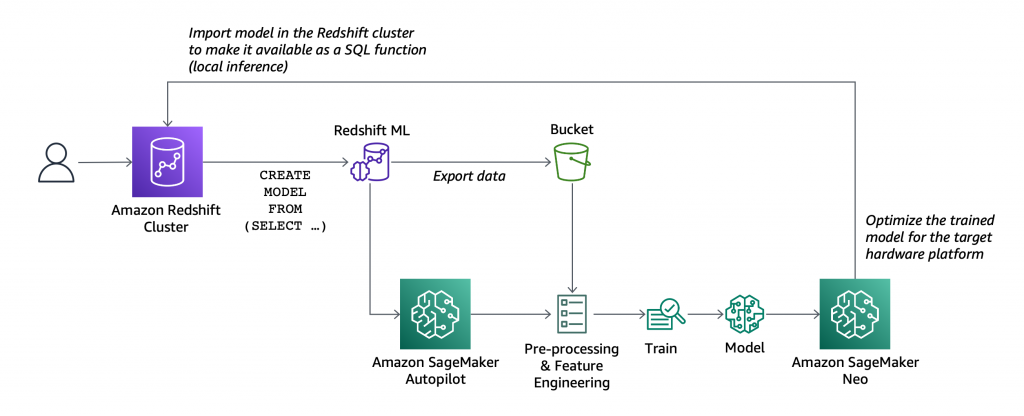Amazon Web Services Inc. is lowering the barrier to entry for machine learning with the launch of its new service Amazon Redshift ML, which it made generally available starting today.
Amazon Redshift ML makes it possible to create, train and deploy machine learning models using basic Structured Query Language commands. It works in tandem with Amazon SageMaker, the company’s fully managed machine learning service, so users don’t need to move their data first.
The service is built on top of Amazon Redshift, which is a fully managed cloud data warehouse service that’s already proved to be extremely popular. With Amazon Redshift, users can use SQL to query and combine massive the amounts of structured and semi-structured data that are fed into it from the various databases and applications they use.
Although Amazon Redshift makes it easy to analyze data, it has always been much more of a struggle to use the data within it to train machine learning models, AWS Evangelist Danilo Poccia said in a blog post.
“What if you want to go a step further and process this data to train ML models and use these models to generate insights from data in your warehouse?” he asked. “In the past, you would need to export the training data from Amazon Redshift to an Amazon Simple Storage Service bucket, and then configure and start a machine learning training process. This process required many different skills and usually more than one person to complete.”
Amazon Redshift ML makes life easier because it enables companies to use SQL statements to create and train models using Redshift data, and then use those models for a range of use cases, including churn prediction or fraud risk scoring, Poccia said.
It works by automatically discovering the best model, then tunes it based on the training data available using Amazon SageMaker Autopilot. Alternatively, users can select a specific model type if they desire. Users then set their parameters and the service will automatically build, train and deploy the model on Redshift data.
“You can obtain predictions from these trained models using SQL queries as if you were invoking a user defined function and leverage all benefits of Amazon Redshift, including massively parallel processing capabilities,” Poccia said. “You can also import your pre-trained SageMaker Autopilot, XGBoost or MLP models into your Amazon Redshift cluster for local inference.”

Constellation Research Inc. analyst Holger Mueller said he believes three trends have shaped Amazon’s launch of Amazon Redshift ML. The first and most obvious, he said, is that there are not enough data scientists in the world to build all of the artificial intelligence and machine learning models it needs. The easiest way to get around this is for AI and machine learning to be done by developers who are familiar with SQL, he explained.
“Second, successful machine learning and AI needs to be close to the data it uses, hence the integration with the Amazon Redshift database,” Mueller said.
The third trend Mueller noted is that Amazon has been creating a lot of high-level offerings recently aimed at making it easier for developers and other customers to use some of the more complex services it provides.
“Amazon is doing that here too, bringing together Redshift with SageMaker and its Neo function that creates the SQL for a machine learning model,” Mueller explained. “These are all key advances for enterprises that want to accelerate business processes and become more agile.”
Amazon said Amazon Redshift ML leverages existing cluster resources for its predictions, so that means customers don’t have to worry about any extra charges. When they create a model in Amazon Redshift, they only have to pay for the associated SageMaker costs, the company added.
Amazon Redshift ML is available now in the company’s US East (Ohio), US East (N Virginia), US West (Oregon), US West (San Francisco), Canada (Central), Europe (Frankfurt), Europe (Ireland), Europe (Paris), Europe (Stockholm), Asia Pacific (Hong Kong) Asia Pacific (Tokyo), Asia Pacific (Singapore), Asia Pacific (Sydney), and South America (São Paulo) regions.
This article has been published from the source link without modifications to the text. Only the headline has been changed.




